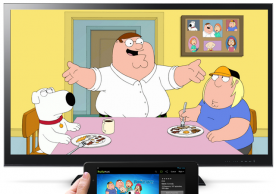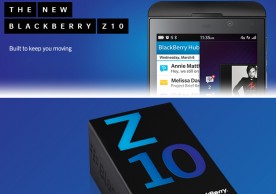Disney Research Introduces Touché Capacitive Sensing Technology: How It Will Revolutionize Our Lives
Staff Reporter
Everything from a doorknob to a tablet could become a touch device soon, as Disney researchers are working on a touch and gesture interface called Touché. The technology processes more information than current touch sensors, which focus on single- and multiple-finger inputs. Here's a rundown of what the technology can do.
Development
The technology is being developed by scientists at Disney Research in Pittsburgh, Pennsylvania. In the video explaining the technology, the researchers say that conventional touch technology is "binary" - users are either touching or not touching. With Touché, multiple frequencies are supported and this enables a wide variety of touch gestures.
Simultaneous gestures
Everyday objects will be touch sensitive. Multiple setups are demonstrated, with five gestures used on a doorknob: no touch, one-finger touch, two-finger pinch, a circle gesture and a grasp. On a table, the technology could sense a person's posture. For example resting one hand or two, an elbow or two, folding arms or walking away.
Touché also works with existing touch technology, sensing inputs that are binary and how the user is gesturing ... if at all. The video shows distinctions between a finger, two fingers, a three finger pinch or if all fingers are used. On a smartphone for example, swiping left and right between apps with one finger or four doesn't change the behavior.
No-object touch
Touché does not require metallic objects and can add touch sensitivity to the human body, communicating over Bluetooth. It can also be used with liquids - water was shown in the setup - and recognizes when a hand was submerged or not.
In terms of real world application, multiple examples were given. The first was teaching kids how to eat breakfast cereal, where the wrong method of eating - by hand or chopstick - caused a buzzer to sound. The second was listening to music. Changing music is done through gestures on the hand and arm, while playing music is done through hands being brought together in a prayer-like gesture; increasing and decreasing the volume was done through tapping the palm of the hand and the arm with two fingers. Changing tracks is performed by matching the fingers and thumb together, and then separating at once.
"It's not inconceivable that one day mobile devices could have no screens or buttons and rely on the body as the input service," the researchers said.
Contextual awareness
Gestures could also enhance current technology. On a tablet device, pinching performed the Alt-Click function, which could bring up a contextual menu on a file as shown in the video.
On a doorknob, different gestures represented different situations: a single finger tap represented "Come in quietly," with the status displayed on the door. Similarly, sofas used Touché: a user sitting down would turn the TV on while lying down dimmed the lights. If the user fell asleep, the TV and lights would turn off.
Check out the video below.
(reported by Jonathan Charles, edited by Dave Clark)
most read
more stories from What's Hot
-
Grand Theft Auto Online (GTA Online) launch issues: Rockstar details bug fix status
Rockstar Games has acknowledged the most common GTA Online launch issues and detailed the bug fix status for each problem it's currently working on.
ernest hamilton -
Target announces Brigthspot prepaid mobile service to debut on Oct. 6
Target has announced its new prepaid mobile service, Brightspot, which will debut on Sunday, Oct. 6.
ernest hamilton -
Hulu Plus now works with Google’s Chromecast streaming dongle
Hulu has added support for Google's Chromecast streaming dongle, allowing Hulu Plus users to 'cast' video directly to Chromecast.
ernest hamilton -
Grand Theft Auto (GTA) Online finally goes live
The much-awaited Grand Theft Auto (GTA) Online mode has finally gone live, unfolding a whole interconnected universe.
ernest hamilton -
BlackBerry blames $935 million hit on the BlackBerry Z10 – Q2 fiscal results are not pretty
BlackBerry has posted its Q2 fiscal results and blames a $935 million hit on 'Z10 Inventory Charge'
ernest hamilton -
Android KitKat contest reaches India with a chance to win the new Nexus 7 (2013)
The KitKat contest has now reached India, bringing promotional packages with the chance to win a new Nexus 7 (2013).
ernest hamilton -
Google Talk (Gchat) messages reach wrong recipients – Careful what you say now
Google Talk has been sending messages to the wrong recipients, raising some serious privacy concerns.
ernest hamilton -
Grand Theft Auto V (GTA 5) makes whopping $800M on launch day, dethroning Call of Duty: Black Ops 2
Grand Theft Auto V publisher Take-Two has announced that the new GTA 5 made a whopping $800 million on launch day, breaking the record previously set by Call of Duty: Black Ops 2.
ernest hamilton












